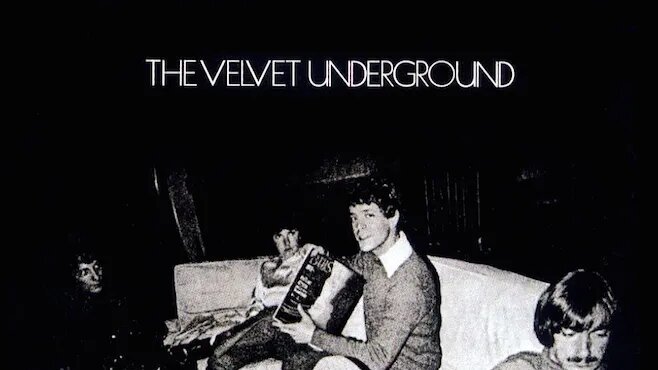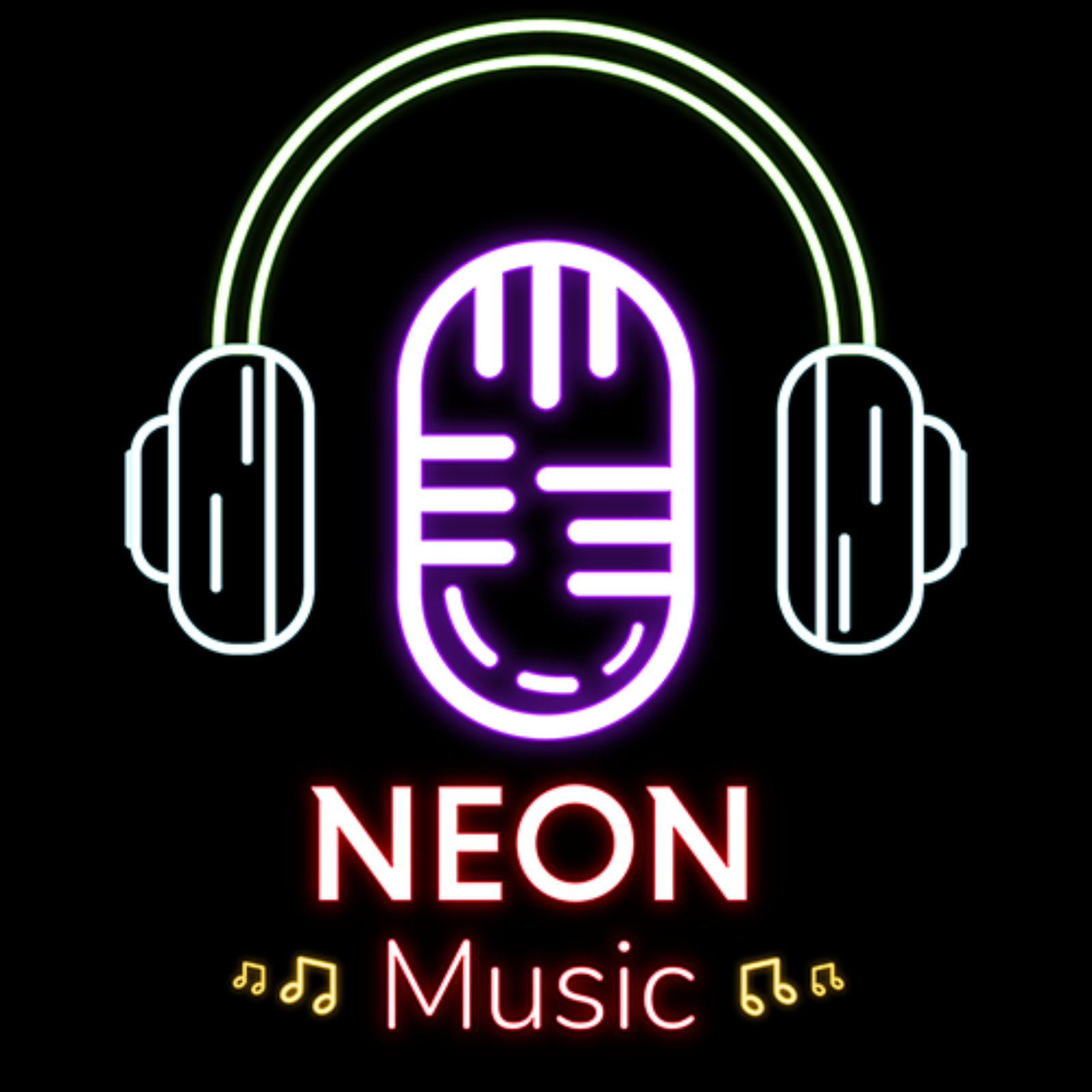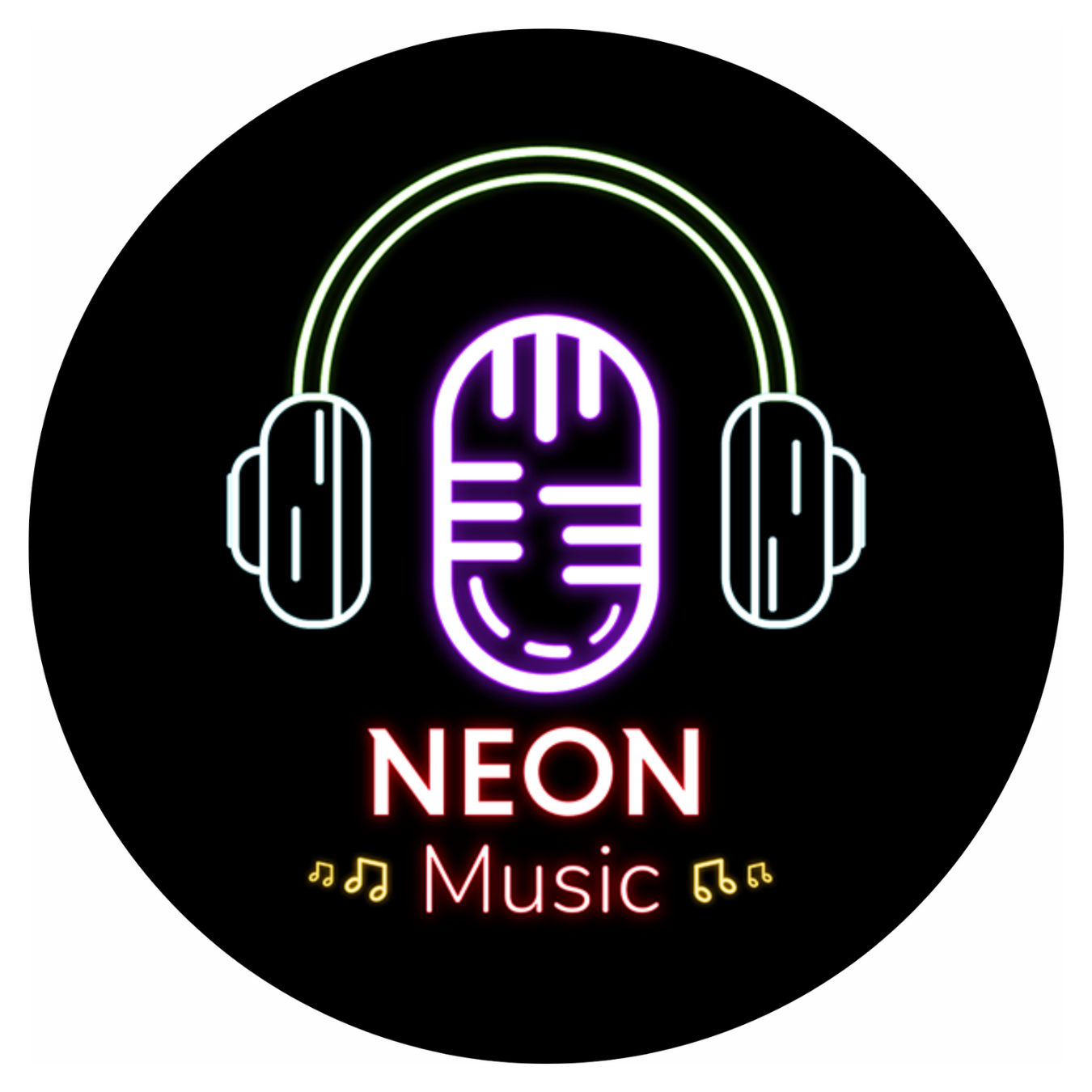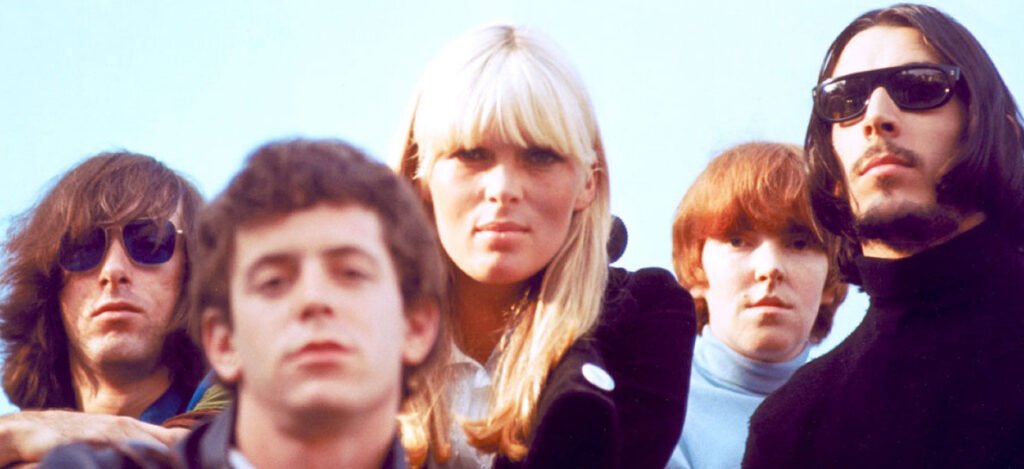Have you ever heard a song that made you feel like it was written just for you? A song that captured your emotions, your memories, your dreams? A song that spoke to your soul?
If you have, chances are you have heard “Pale Blue Eyes” by The Velvet Underground.
Pale Blue Eyes is one of those songs that transcends time and space. It was released in 1969, but it sounds as fresh and relevant today as it did back then. It was written by Lou Reed, the legendary singer-songwriter and leader of The Velvet Underground, but it resonates with anyone who has ever experienced unrequited love. It was recorded by a band that was known for their experimental and avant-garde music, but it showcases their style and innovation in blending folk, pop, and country influences with poetic and personal lyrics.
In this article, we will explore the musical and lyrical analysis of Pale Blue Eyes by The Velvet Underground and how it showcases the band’s style and innovation. We will examine how the song uses a simple chord progression, a folk-rock rhythm, and a sparse arrangement to create a hypnotic and intimate atmosphere. We will also look at how the song incorporates elements of pop and country music, such as the Hammond organ, the tambourine, and the harmonies. We will then delve into the lyrics of Pale Blue Eyes and see how they are a poignant and poetic expression of Lou Reed’s unrequited love for his former girlfriend Shelley Albin. We will also analyse how the song explores themes of love, loss, betrayal, and acceptance. Finally, we will discuss how Pale Blue Eyes is an example of the Velvet Underground’s innovation in creating songs that are both accessible and artistic, personal and universal. We will also provide examples of how the song has influenced and inspired other artists and genres, such as R.E.M., Patti Smith, The Kills, and indie rock. We will also reflect on how the song represents the band’s legacy and impact on music history and culture.
So sit back, relax, and enjoy this musical and lyrical analysis of Pale Blue Eyes by The Velvet Underground.
The Musical Style of Pale Blue Eyes
The musical style of Pale Blue Eyes reflects the Velvet Underground’s eclectic and experimental approach to songwriting and production. The song uses a simple chord progression of G-C-D-G throughout, which is typical of folk-rock songs. However, the song also adds some subtle variations to the chords, such as adding a seventh or a ninth note to create more tension and interest. The song also uses a capo on the third fret of the guitar to raise the pitch of the chords and give them a brighter sound.
The rhythm of Pale Blue Eyes is also influenced by folk-rock music. The song has a steady 4/4 beat that is accentuated by the strumming of the acoustic guitar and the tapping of the tambourine. The rhythm is simple but effective in creating a sense of movement and flow. The rhythm also contrasts with the slow tempo of the song, which gives it a languid and dreamy quality.
The arrangement of Pale Blue Eyes is sparse and minimalist. The song features only four instruments: an acoustic guitar played by Lou Reed, an electric guitar played by Sterling Morrison, a bass guitar played by Doug Yule, and a tambourine played by Maureen Tucker. There are no drums or percussion in the song, which adds to its intimacy and simplicity. The only other instrument in the song is a Hammond organ played by Yule, which appears in the chorus and adds some texture and warmth to the sound.
The vocals of Pale Blue Eyes are also understated and delicate. Lou Reed sings the lead vocals in a soft and gentle voice that conveys his vulnerability and sincerity. He is joined by Morrison and Yule in the chorus, who provide some harmonies that enhance the melody and add some contrast to Reed’s voice. The vocals are mixed low in the sound, which gives them a sense of distance and detachment.
The musical style of Pale Blue Eyes contrasts with the band’s previous and subsequent albums, which were more noisy, abrasive, and avant-garde. The Velvet Underground’s 1967 debut album, The Velvet Underground & Nico, featured songs that experimented with feedback, distortion, drones, noise rock, art rock, proto-punk, psychedelic rock, spoken word poetry, and controversial topics such as drugs, sex, and violence. The band’s third album, The Velvet Underground (1969), which included Pale Blue Eyes, was more subdued, mellow, and melodic, featuring songs that explored folk, pop, and country music as well as personal and introspective themes. The band’s fourth and final album, Loaded (1970), was more commercial and mainstream, featuring songs that incorporated rock and roll, glam rock, and soul music, as well as catchy hooks and choruses.

The musical style of Pale Blue Eyes showcases the Velvet Underground’s style and innovation in blending different musical influences and genres with their own unique vision and voice. The song demonstrates the band’s versatility and creativity in creating a song that is simple yet complex, familiar yet original, soothing yet haunting.
The Lyrics of Pale Blue Eyes
The lyrics of Pale Blue Eyes are a poignant and poetic expression of Lou Reed’s unrequited love for his former girlfriend Shelley Albin. The song uses imagery, metaphor, and repetition to convey Reed’s feelings of longing, regret, and nostalgia.
The song begins with the image of “lips like sugar cane”, which suggests sweetness, temptation, and addiction. The image also implies that Reed’s lover is exotic and foreign, as sugar cane is not native to New York City, where Reed lived. The image also contrasts with the title of the song, Pale Blue Eyes, which suggests coldness, distance, and sadness.
The chorus of the song repeats the phrase “I thought of you as everything I’ve had but couldn’t keep“, which reveals Reed’s sense of loss and failure. The phrase also implies that Reed’s lover was too good for him or that he did not deserve her. The phrase also suggests that Reed’s lover was not his alone, or that she belonged to someone else.
The second verse of the song introduces the image of “a little girl with Spanish eyes“, which refers to Albin’s daughter from a previous marriage. The image shows that Reed was involved in Albin’s family life and that he cared for her daughter as well. The image also shows that Reed was aware of Albin’s past and her other relationships. The image also contrasts with the image of Pale Blue Eyes, which implies that Albin’s daughter had a different father.
The third verse of the song uses the metaphor of “a very old friend” to describe Reed’s lover. The metaphor shows that Reed and Albin had a long and deep connection and that they shared a lot of history and memories. The metaphor also shows that Reed respected and valued Albin as a person and a friend. However, the metaphor also implies that Reed and Albin are not lovers anymore, or that they never were. The metaphor also suggests that Reed was in denial or delusional about his relationship with Albin.
The fourth verse of the song uses the image of “the music hall“, which refers to a venue where Reed and Albin used to go to see live music. The image shows that Reed and Albin had a common interest and passion for music and that they enjoyed spending time together. The image also shows that Reed was nostalgic for the good times they had together. However, the image also implies that Reed and Albin’s relationship was based on superficial or temporary things, such as entertainment or fun. The image also suggests that Reed and Albin’s relationship was over or fading away.
The fifth verse of the song uses the repetition of “it was good what we did yesterday“, which echoes the chorus of “I thought of you as everything I’ve had but couldn’t keep”. The repetition shows that Reed was still attached to Albin and that he wanted to relive or recapture their past. The repetition also shows that Reed was grateful for what they had together and that he appreciated their moments. However, the repetition also implies that Reed and Albin’s relationship was not lasting or meaningful, but only a series of events or experiences. The repetition also suggests that Reed and Albin’s relationship was in the past tense and that they had no future together.
The lyrics of Pale Blue Eyes explore themes of love, loss, betrayal, and acceptance. The song tells the story of a man who loves a woman who does not love him back or who loves someone else. The song reveals the man’s pain and frustration, as well as his hope and resignation. The song also expresses the man’s admiration and respect for the woman, as well as his guilt and remorse. The song also acknowledges the man’s reality and limitations, as well as his dreams and fantasies.
The lyrics of Pale Blue Eyes are a masterpiece of musical and lyrical expression that showcase the Velvet Underground’s style and innovation in blending folk, pop, and country influences with poetic and personal lyrics. The song demonstrates the band’s ability and skill in creating a song that is both accessible and artistic, personal and universal.
The Innovation of Pale Blue Eyes
Pale Blue Eyes is an example of the Velvet Underground’s innovation in creating songs that are both accessible and artistic, personal and universal. The song appeals to a wide range of listeners with its catchy melody, relatable lyrics, and emotional resonance. The song also challenges and inspires other artists and genres with its originality, creativity, and influence.
The song has a catchy melody that is easy to sing along to and remember. The melody is based on a simple chord progression that is common in folk-rock songs, but it also adds some variations and twists that make it more interesting and unique. The melody also follows the mood and tone of the lyrics, creating a harmony between the music and the words.
The song has relatable lyrics that express a universal theme of unrequited love. The lyrics are based on Lou Reed’s personal experience with his former girlfriend Shelley Albin, but they also resonate with anyone who has ever felt the same way. The lyrics are honest and sincere, but they also use imagery, metaphor, and repetition to create a poetic and artistic language.
The song has an emotional resonance that touches the listener’s heart and soul. The song conveys Lou Reed’s feelings of longing, regret, and nostalgia, but it also evokes the listener’s own emotions and memories. The song creates a connection between the singer and the listener, as well as between the listener and themselves.
The song also challenges and inspires other artists and genres with its originality, creativity, and influence. The song shows the Velvet Underground’s innovation in blending different musical influences and genres with their own unique vision and voice. The song also demonstrates the band’s versatility and creativity in creating a song that is simple yet complex, familiar yet original, and soothing yet haunting.
The song has influenced and inspired many other artists and genres over the years. Some of the most notable examples are:
- R.E.M., who covered the song for the B-side of their single So. Central Rain in 1984. The band also cited the Velvet Underground as one of their main influences in their early career.
- Patti Smith, who performed the song live in the mid- to late 1970s. She also collaborated with Lou Reed on several occasions, such as on her album Easter (1978) and on his album New York (1989).
- The Kills, who recorded the song in 2010 and released it as a B-side in 2012, also acknowledged the Velvet Underground as one of their influences.
- Indie rock, which is a genre that emerged in the 1980s and 1990s and was influenced by the Velvet Underground’s experimental and independent approach to music, Some of the indie rock bands that have cited the Velvet Underground as an influence are The Smiths, Sonic Youth, The Strokes, Arcade Fire, and The National.
The song represents the band’s legacy and impact on music history and culture. The song is one of the most popular and acclaimed songs by the Velvet Underground, and it is considered one of the greatest songs of all time. The song is also one of the most covered and sampled songs by other artists, and it has been featured in many films, TV shows, and books. The song is also a testament to the band’s artistic vision and integrity, as well as their influence and inspiration on generations of musicians and listeners.
The impact of Pale Blue Eyes on film
The song has been used in several films as a soundtrack, a plot device, or a theme. Some of the films that have featured the song are:
- The Diving Bell and the Butterfly (2007) is a French biographical drama film based on the memoir of Jean-Dominique Bauby, who suffered a massive stroke that left him with locked-in syndrome. The film uses an instrumental version of Pale Blue Eyes to create a contrast between Bauby’s inner world and his outer reality.
- August (2008), an American drama film set in 2001, during the dot-com bubble. The film follows two brothers who try to save their failing start-up company. The film uses Pale Blue Eyes in a scene where one of the brothers reconnects with his ex-girlfriend.
- Adventureland (2009), an American comedy-drama film set in 1987, is about a college graduate who takes a summer job at an amusement park. The film uses Pale Blue Eyes in a scene where the protagonist confesses his love to his co-worker.
- The Vertical Ray of the Sun (2000) is a Vietnamese-French drama film that explores the lives and relationships of three sisters in Hanoi. The film uses Pale Blue Eyes in a scene where one of the sisters dances with her husband.
- Regular Show: The Movie (2015), an American animated science fiction comedy film based on the Cartoon Network series Regular Show, uses Pale Blue Eyes in a scene where the main characters travel back in time to stop an evil version of themselves.
The impact of Pale Blue Eyes on film shows that the song is not only a musical masterpiece but also a cinematic one. The song has influenced and enriched many films with its hypnotic and intimate atmosphere, its poignant and poetic lyrics, and its universal and timeless theme of unrequited love.
Pale Blue Eyes is a masterpiece of musical and lyrical expression that showcases the Velvet Underground’s style and innovation in blending folk, pop, and country influences with poetic and personal lyrics. The song uses a simple chord progression, a folk-rock rhythm, and a sparse arrangement to create a hypnotic and intimate atmosphere. The song also incorporates elements of pop and country music, such as the Hammond organ, the tambourine, and the harmonies. The song also reveals Lou Reed’s unrequited love for his former girlfriend Shelley Albin, and it explores themes of love, loss, betrayal, and acceptance. The song also appeals to a wide range of listeners with its catchy melody, relatable lyrics, and emotional resonance. The song also challenges and inspires other artists and genres with its originality, creativity, and influence. The song also represents the band’s legacy and impact on music history and culture.
We hope you enjoyed this musical and lyrical analysis of Pale Blue Eyes by The Velvet Underground. If you did, please share it with your friends and family, who might also appreciate it. If you have any comments or questions about the song or the band, please leave them on our Instagram post. We would love to hear from you. And if you want to learn more about other artists or bands and their songs, please check out our other articles on our website.


